Luchita Hurtado
Untitled
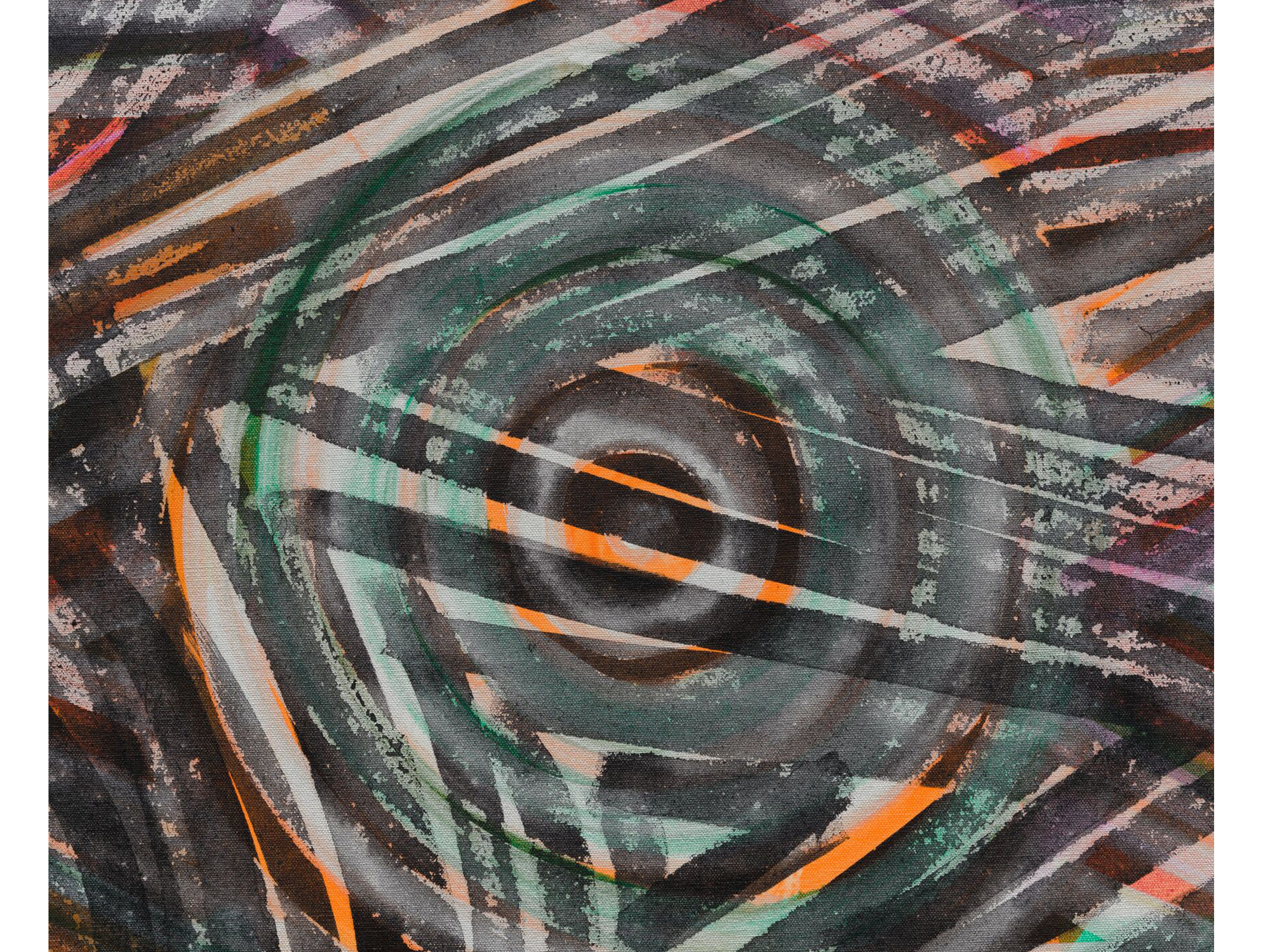
Painted in 1974, ‘Untitled’ showcases Luchita Hurtado’s longstanding experimental engagement with unexpected perspectives. Streaks of bright orange, mauve and red paint meet swirls of gray and turquoise in a dazzling, kaleidoscopic dance of patterned pigment. Black brushstrokes of thinned paint are layered over ribbons of color and swish across the canvas in various directions, capturing the swift, rapid energy of Hurtado’s gesture.
‘Untitled’ (1974) belongs to the artist’s Linear Language or Word Puzzles series. Though these paintings are geometric and textile-like, the compositions’ abstracted shapes first begin as words. To conceal and obscure the letters, Hurtado painted patterns of pigment into reconfigured shapes. The artist’s technical process of fragmenting and disguising text plays with the viewer’s visual perception and questions the notion of language as static or contained.
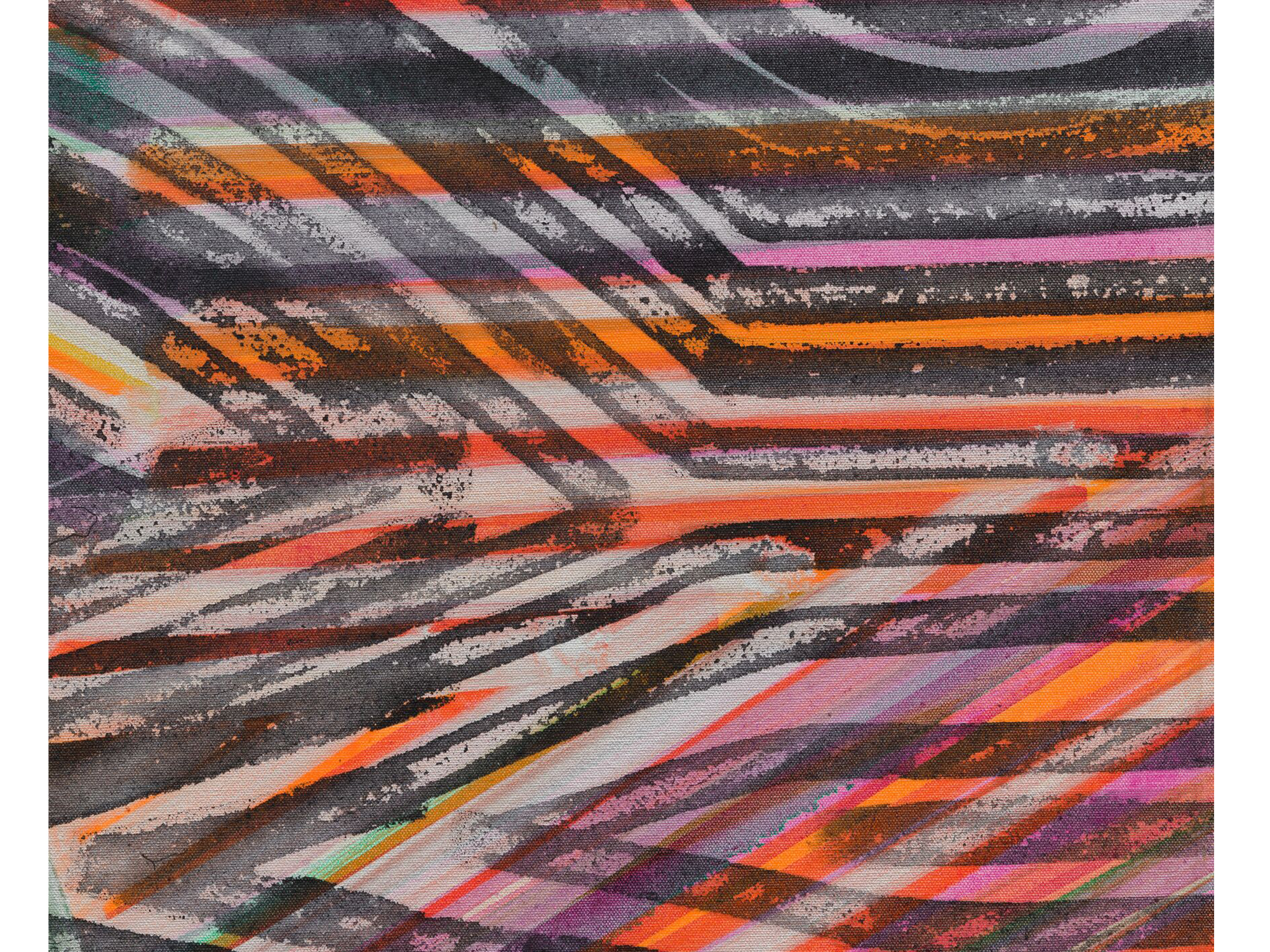
‘I began to make very fast paintings with strong lines, almost with my eyes closed. I wanted to paint speed. I had to create a special brush to be able to do it. The paintings were mostly straight lines and words in Spanish and English.’—Luchita Hurtado [1]
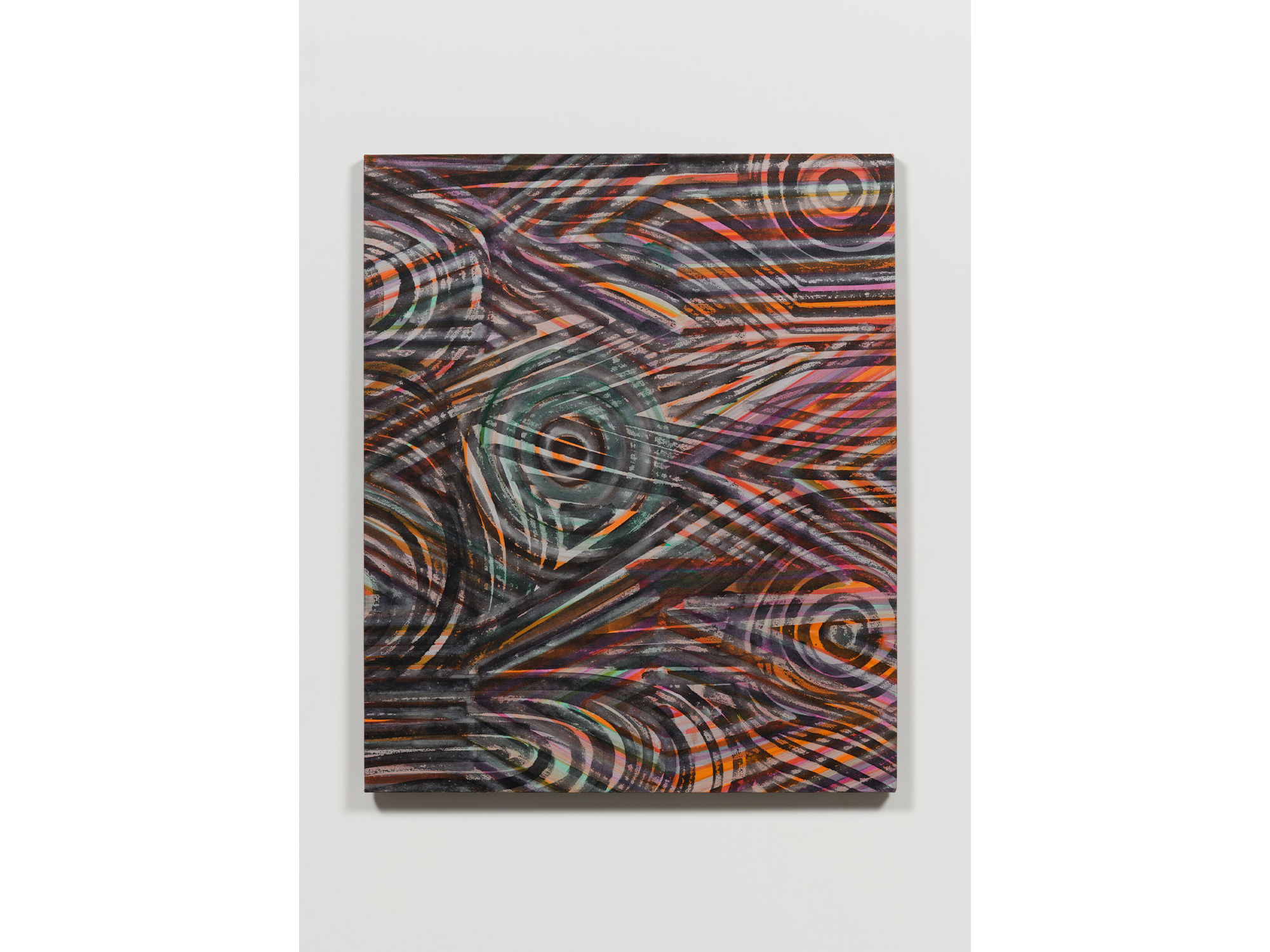
Developing her artistic vocabulary through a joining of abstraction, mysticism, corporality and landscape, the breadth of Hurtado’s materials, styles and praxis speak to the multicultural and experiential contexts that shaped her life and career. Born in Maiquetía, Venezuela in 1920, Hurtado immigrated to New York as a child and spent much of her adult life between Santa Monica, California and Taos, New Mexico. ‘Untitled’ (1974) was painted during Hurtado’s participation in the Los Angeles Council of Women Artists—a feminist activist group that protested the under-representation of women in art institutions and created independent spaces for female artists. This period was particularly formative for Hurtado as the artist’s involvement with the council fortified her feminist ideals and reaffirmed her status as an artist in her own right. Members went on to form the Woman’s Building in Los Angeles, which hosted a solo exhibition of Hurtado’s Linear Language works in 1974¬—the artist’s only solo show until recent years.
‘I make clothes, I cook meals, I’ve raised children. I write poetry, and I keep a journal of my dreams as well as my days, but most important, I paint and consider myself a painter. An artist’s recesses become a condition, a preparation to transmit, a commitment to oneself.’—Luchita Hurtado [2]



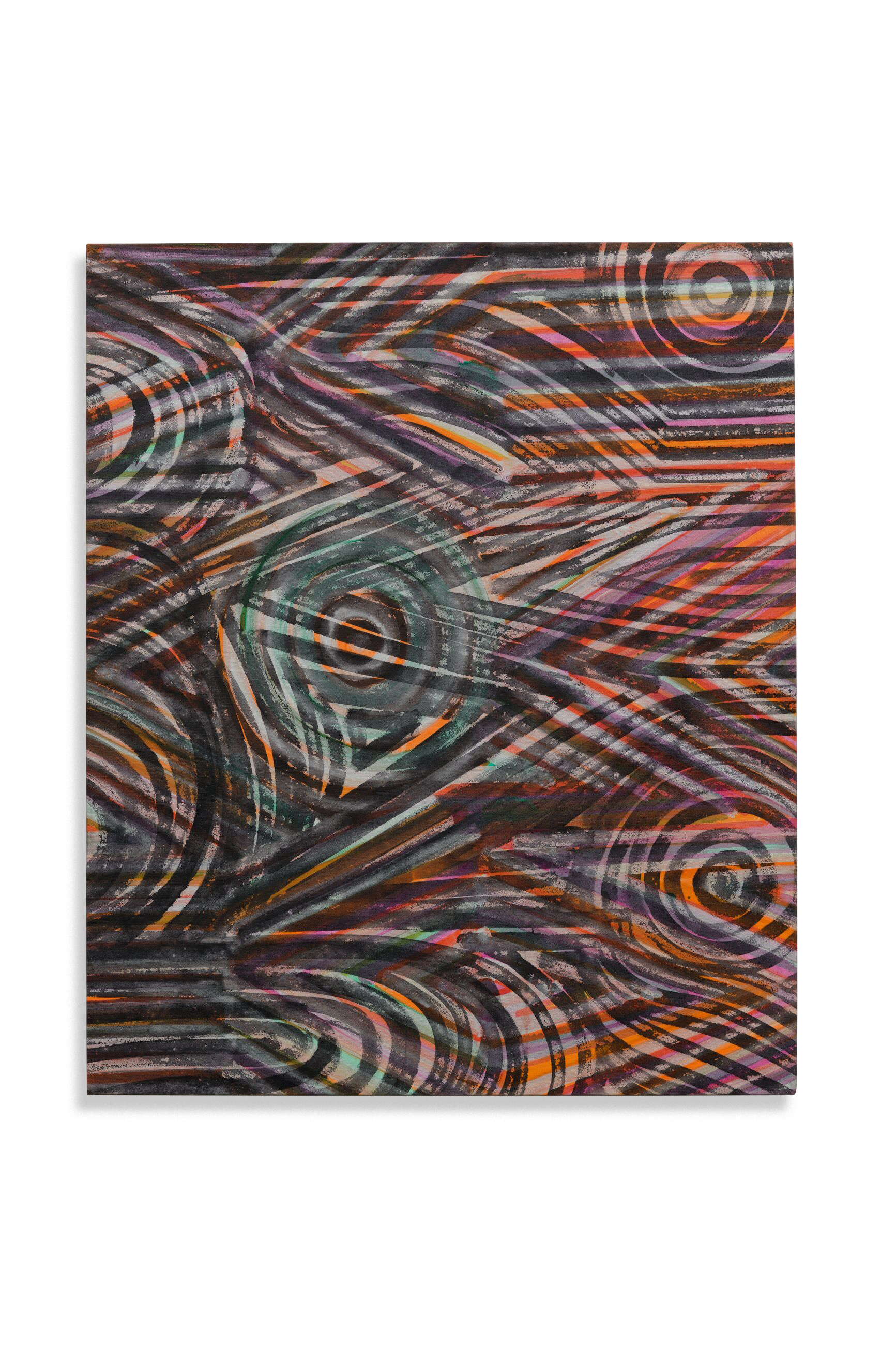
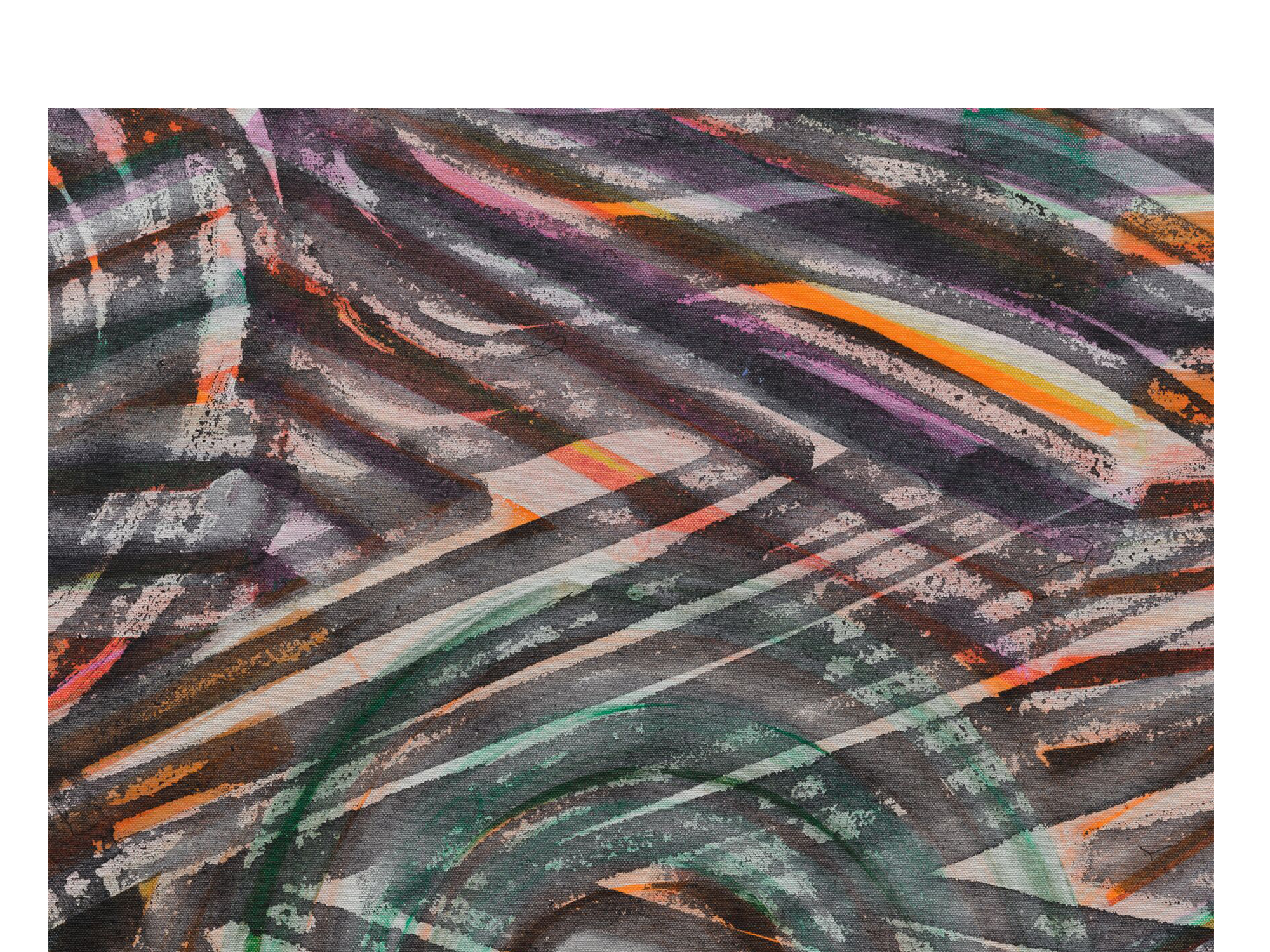
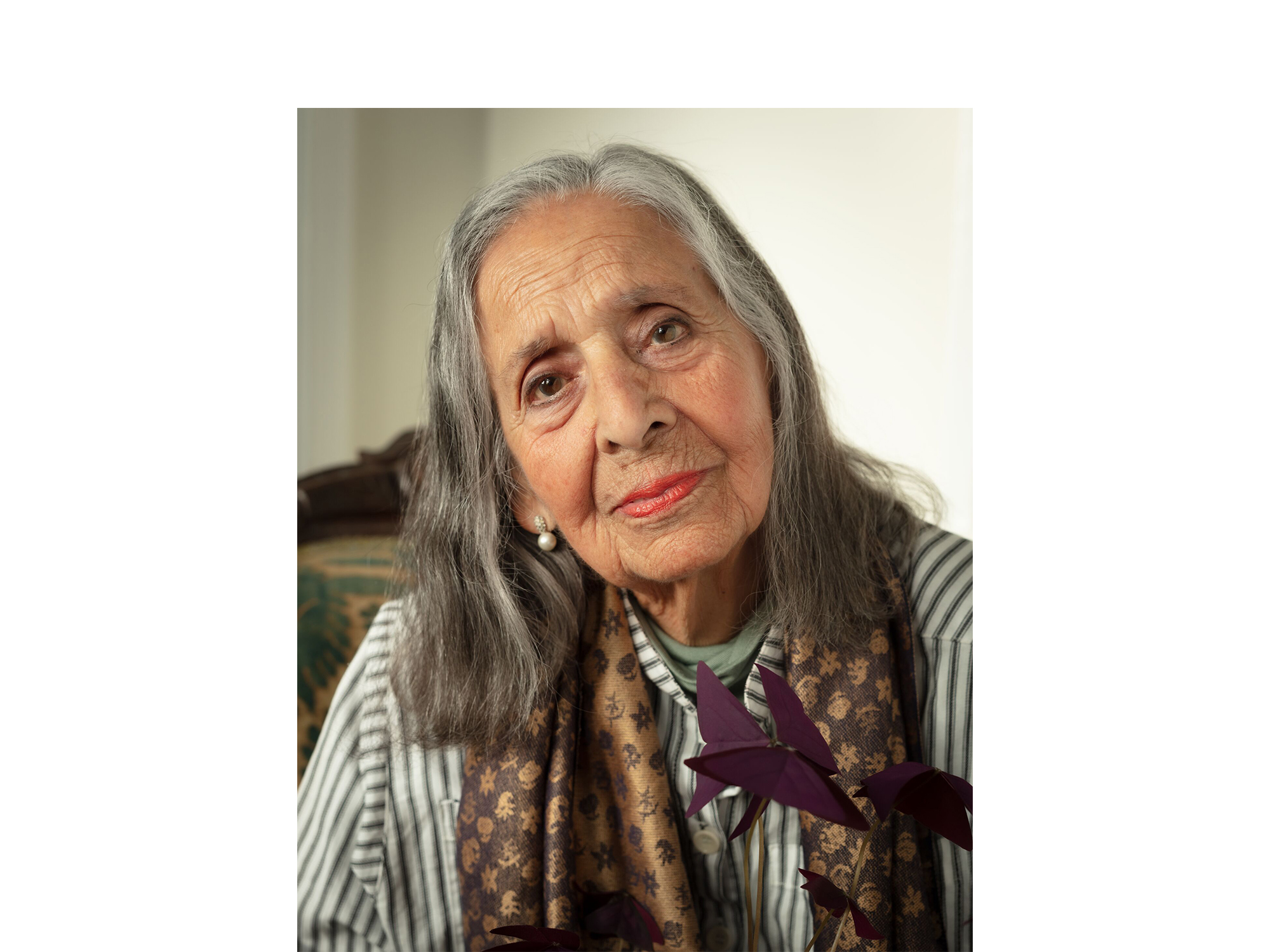 Born in Maiquetía, Venezuela, in 1920, Luchita Hurtado dedicated over eighty years of her extensive oeuvre to the investigation of universality and transcendence. Developing her artistic vocabulary through a coalescence of abstraction, mysticism, corporality and landscape, the breadth of her experimentation with unconventional techniques, materials and styles speak to the multicultural and experiential contexts that shaped her life and career. Hurtado emigrated to the United States in 1928, settling in New York where she attended classes at the Art Students League. She relocated to Mexico City in the late 1940s and then moved to San Francisco Bay in the following decade. Eventually, Hurtado settled in Santa Monica, California and frequently visited her second home in Taos, New Mexico.
Born in Maiquetía, Venezuela, in 1920, Luchita Hurtado dedicated over eighty years of her extensive oeuvre to the investigation of universality and transcendence. Developing her artistic vocabulary through a coalescence of abstraction, mysticism, corporality and landscape, the breadth of her experimentation with unconventional techniques, materials and styles speak to the multicultural and experiential contexts that shaped her life and career. Hurtado emigrated to the United States in 1928, settling in New York where she attended classes at the Art Students League. She relocated to Mexico City in the late 1940s and then moved to San Francisco Bay in the following decade. Eventually, Hurtado settled in Santa Monica, California and frequently visited her second home in Taos, New Mexico.